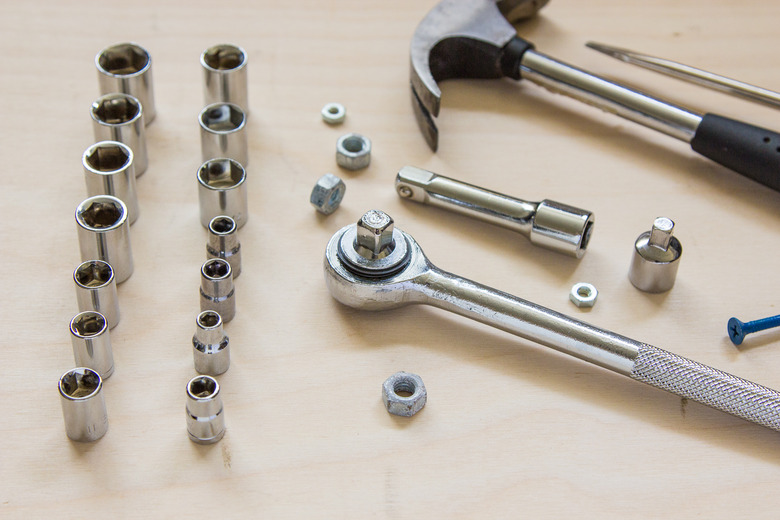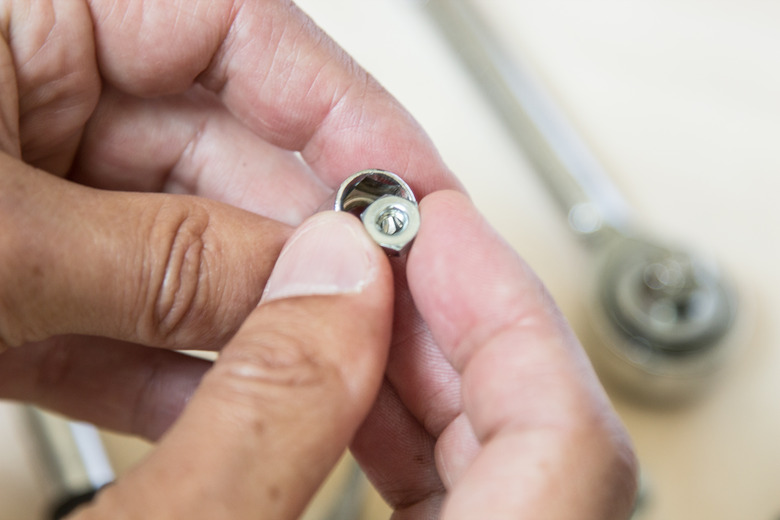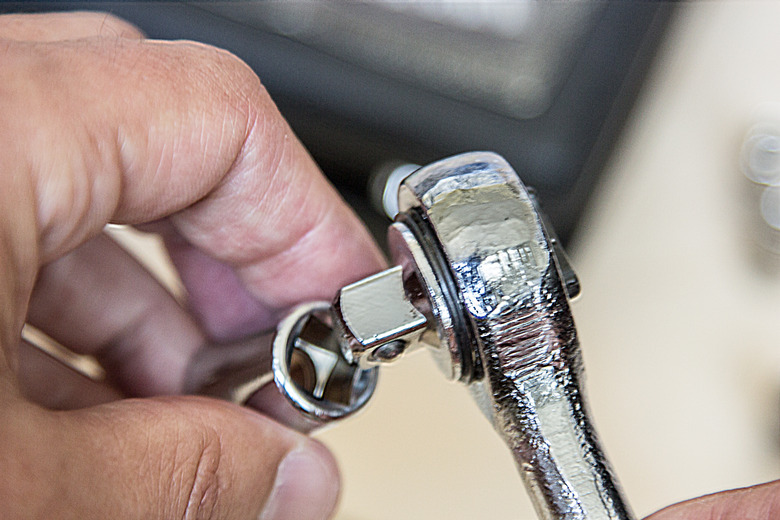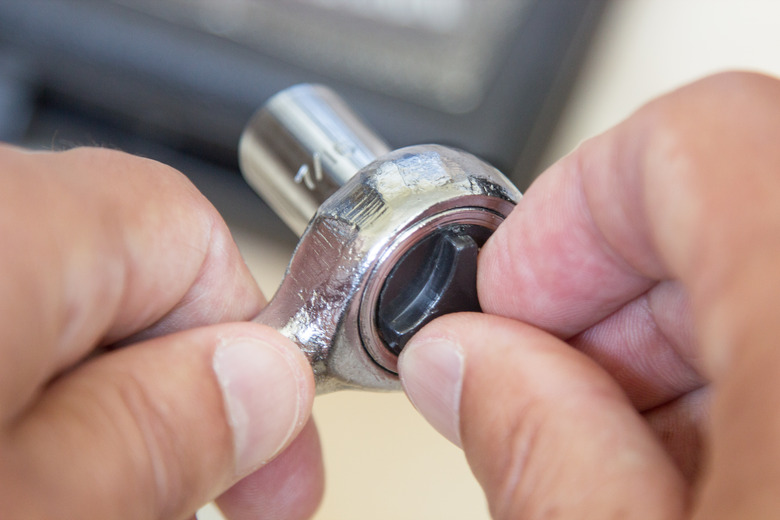How To Use A Socket Wrench
A socket wrench is a simple tool that allows you to turn nuts and some bolts with more ease than a regular wrench. The ratcheting feature allows you to keep the wrench connected to the bolt and eliminates the need to refit it with every turn of the bolt. This is especially important when working space is limited. Socket wrenches are so useful that they are standard equipment for mechanics, carpenters and many other tradespeople. Sockets can be graduated in English or metric units, and many socket sets include some of both types.
Step 1
Select the right socket for the job; your socket set may include a dozen or more sockets. If you know the size of the nut you want to turn, you can find the measurements labeled on the side of the sockets. If you don't know the exact size, grab a likely looking socket and try it on the nut or bolt you want to turn. If it's too loose, try a smaller one. Avoid trying to turn a bolt with a socket that is too large — you can strip the bolt and make it impossible to turn.
Step 2
Attach the socket to the handle by sliding the square hole in the socket onto the square knob on the handle. You should hear a click when it's fully in place.
Step 3
Select direction. Directly opposite where you attached the socket, you will see a switch that sets the socket wrench for loosening or tightening. Turn the switch to the right for tightening and left for loosening.
Step 4
Place the socket on the nut you need to turn. Use it just like a regular wrench or pliers, except do not remove the wrench when you run out of space. Simply twist it back in the opposite direction and repeat.
Tip
When placing nuts or bolts, it is sometimes easier to just use the socket, spinning it with your hand until you need the added leverage of the handle.




